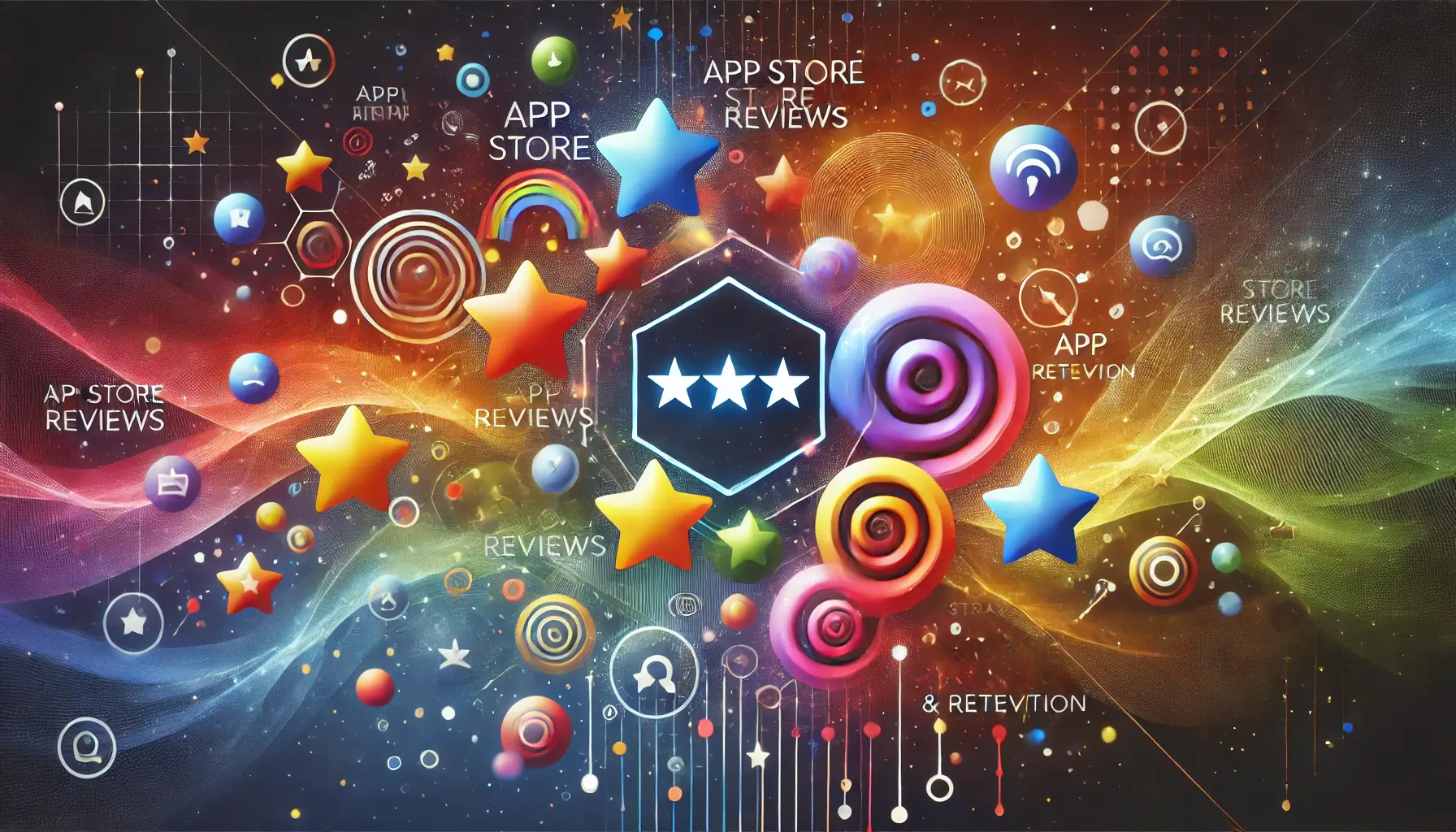On the App Store Optimization (ASOApp Store Optimization, the process of improving an app's visibility and conversion rates in app stores.) battlefield, getting new users is just half the battle won.
Even more important to long-term success: keeping them.
Most businesses pay a lot of attention to increasing downloads and visibility, but besides developing such strategies, you will need retention strategies that make sure your users keep coming back.
An efficient retention strategy will turn a one-time user into a frequent and loyal customer.
In this article, we are going to dig deep into the most critical retention strategies in ASO that do not only help you get more installs but also keep users for a long period.
- Learn about retention strategies in ASO
- How to Make Your Apps More Engaging for Better Retention
- How To Keep Users Using ASO Best Practices
- Updated and Push Notifications to Increase User Retention
- Actionable ASO: Fixing Retention with Analysis
- The Complete Guide for Retention Strategies in ASO
- ASO Retention Strategy FAQ
Learn about retention strategies in ASO
ASO retention strategies: Retention in ASO are the actions and tactics that you carry out so your users keep coming back to your app.
But more importantly, these retention tactics ensure that the competition for catching a user is just half of your app’s climb.
Instead, user retention is an investment in the long-term growth of your business.
But then, what are these strategies and how do they sit in the land of ASO?

Conceptual visualization of the importance of retention in App Store Optimization (ASO), highlighting user engagement and satisfaction.
Why Retention Matters in ASO
Retention remains one of the most critical metrics any app developer or marketer tracks, and is directly linked to user satisfaction as well as the performance of your application.
Your app seems to be adding value if your retention rate is high at the end of the day; however, this stat may also indicate loose screws or inadequacies in usability/content if it shows up low.
Keep in mind: If you are not making your users happy, the growth will be short-lived!
With higher user engagement, users would leave positive reviews, increasing your app ranking in the store.
It is a cycle that can lead to further downloads and hence a stronger presence in the market.
Which means retention strategies should not be overlooked in ASO.
- Better user engagement = Higher rankings
- With a good reputation comes free organic downloads
- Loyal users = High Lifetime Value (LTV)

Visualization of key metrics tracking user retention in App Store Optimization (ASO), focusing on progress and data analysis.
Key Metrics to Track User Retention
In order to create a successful retention strategy, you need the right data at your fingertips so that you can see how well (or poorly) your app is holding onto users.

Visualization of key metrics to follow for App Store Optimization (ASO), highlighting data tracking and performance measurement.
Key Metrics to Follow
- Daily Active Users (DAU): The number of users who are using your app on a day-to-day basis.
- Retention Rate: The percentage of customers who come back to use your app after a certain amount of time has passed.
- Churn Rate: How frequently users quit using your application over time.
- Session Duration: The amount of time users are spending in your app per visit.
- User Lifetime Value (LTV): The total revenue you expect to derive from a user over that user’s lifetime.
Keeping an eye on these metrics will help you see trends and make data-backed decisions to better your retention strategy over time.

Visualization of the balance between user acquisition and retention in App Store Optimization (ASO), highlighting growth and sustainability.
Balancing Acquisition and Retention in ASO
One of the biggest distractions in ASO is focusing on acquisition numbers.
More downloads equal more potential revenue, right?
But the trick lies in finding a middle ground between getting new users and holding on to those you already have.
While high download numbers may sound good in theory, if your churn rateThe percentage of users who stop using an app over a given period of time. is equally high, then the long-term prospects of your app might suffer financially.
Your retention strategies should complement your acquisition efforts.
This balance can help you not only grow your user base but keep them coming back, creating a more sustainable platform.
Because at the end of the day, ASO success is a big-picture game — retention helps you build your tribe and stay in business for long-term prosperity.
Retention strategies are key to keeping users engaged over time, not just acquiring them.

Visualization of strategies to make mobile apps more engaging, focusing on improving user retention through interaction and utility.
How to Make Your Apps More Engaging for Better Retention
It all starts with delivering a delightful app experience.
When users begin using, they must realize the value offered by your app at that time.
An app you build that runs smoothly and is easy to use will have a tremendous impact on your retention rate.
The aim is to get your app integrated and make it part of a daily routine by enabling both service utilities as well as entertainment value.
This means the challenge for any developer is to strike that balance of usability and engagement.
It can either scare away users with a complex app or bore them to tears if the app is too simple.
Finding this balance will ensure that users return, contributing to a solid retention strategy.

Visualization of the onboarding process designed to foster long-term retention in mobile apps through smooth user guidance.
Onboarding for Long-Term Retention
This is the first impression you get to make through an onboarding process.
Compared to web, the average user on mobile is much more impatient — if you confuse or frustrate them during their app store experience, they likely won’t come back.
The most compelling parts of your app will be how you can deliver value to users, which is why an onboarding experience that efficiently guides them through the features and benefits is essential for long-term retention.
- Hands-on tutorials: Walk users through the application interface without overwhelming them with information.
- Progressive disclosure: Present the user with pages of information as they move through your app, gradually revealing more as they understand its interface.
- Tailored onboarding: Customize the user onboarding flow based on how users interact with your product, ensuring relevance and engagement.
An optimized onboarding process is a crucial step to improve user retention and empower users to see the full value your app offers.

Visualization of engagement-driven features within mobile apps, highlighting user interaction and feedback for improved retention.
On-App User Engagement-Driven Features
Engagement is key to growth and retention.
Your application has to make users come back by delivering value in various ways, whether it be time-saving features, entertainment, or practical functionality.
Here are some features that can help maintain users and strengthen your retention strategies:
- Push notifications: Keep your app at the forefront of the user’s mind without being intrusive.
- Gamification: Introduce game-like features (e.g., rewards, badges, or challenges) to encourage deeper engagement between users.
- Social sharing: Allow users to share their achievements or experiences within the app with their friends on social media platforms.
- Fresh content updates: Regularly update your app with fresh content to give users a reason to return.
Engaging in-app features will keep your users coming back and continuing to find value in what you offer.

Visualization of personalization and customization strategies for mobile apps, emphasizing tailored user experiences to enhance retention.
For Retention — Personalization and Customization
Personalization ensures your app feels unique to each user, leading to higher satisfaction and user retention.
The more useful and tailored your app is to a consumer, the higher the chance they will stay!
Offering customization options allows users to adjust app features according to their preferences, enhancing the personalized experience.
- Personalized content: Build personalized experiences by using data to recommend relevant features or content.
- Customizable interface: Let users modify the appearance of the app, offering a unique and personalized experience.
- In-app messaging: Push notifications or personalized offers based on the user’s activity within the app.
When you design your app with personalized and customized experiences in mind, it enhances the user’s journey and contributes to a stronger retention strategy over time.
Creating a delightful app experience that integrates into daily routines is crucial for long-term retention.

Visualization of App Store Optimization (ASO) best practices for mobile apps, highlighting strategies to keep users engaged and retained.
How To Keep Users Using ASO Best Practices
Retention is not only about keeping users happy once they are already in your app; it’s also about ensuring those same people can find you again with proper ASO strategies.
With a proper ASO strategy in place, your app will not just improve its acquisition but also its retention by aligning the way you position your app with what users are looking for.
But the question remains: How does ASO help with retention?
Through keyword optimization, app content updates, and continuous improvements, you can create an app experience that matches your target audience, resulting in long-term user satisfaction, loyalty, and improved retention strategies.
Here are some of the best practices that can help your ASO work well with your retention strategies.

Visualization of keyword optimization strategies for mobile apps, emphasizing the importance of matching user intent for better discoverability.
Keyword Optimization To Match User Intent
Keywords are not only for improving your app’s discoverability but also play a significant role in your retention strategies.
Users often search for apps using specific keywords that reflect their needs and wants.
If your app delivers on those expectations, users are more likely to download and, crucially, keep using your app.
- Mission-based copy: Ensure you incorporate search-friendly keywords that represent your brand while positioning the functionality and use case of what a user should expect from the app.
- Long-tail keywords: Use long-tail, specific keywords that target your niche audience. These are essential for reaching users who are precisely looking for what you offer.
- Keyword refresh: Continuously revisit and refine your keywords to remain relevant to users and search results.
When keywords that align with user expectations are optimized across your product detail pages, they build a seamless connection from search to post-download use, contributing to improved user retention.

Visualization of using App Store updates to improve user engagement, highlighting the role of continuous updates and improvements.
Using App Store Updates To Increase User Engagement
Maintaining your app is essential not only for availability in the market but also for retaining users.
Regular updates show your commitment to continually enhancing the experience for users by fixing issues, adding new features, and improving performance.
- Bug fixes and performance improvements: Quickly fixing common issues helps maintain user confidence in your app. If it becomes frustrating, users may leave.
- Feature updates: Announcing new features or enhancing existing ones keeps users excited about your app and gives them another reason to return.
- Update your app store listing: Reflect any changes and improvements in your app store listing so users can see what’s new and why they should continue using your app.
By regularly updating your app, you keep users engaged while ensuring your app stays relevant to their evolving needs.

Visualization of how App Store reviews contribute to a retention strategy, emphasizing the role of feedback and ongoing improvement.
How App Store Reviews Fit Into Your Retention Strategy
User reviews are critical for both user acquisition and user retention.
Positive reviews attract new users, while responding to negative reviews shows that you care about your users’ experiences, which has a huge impact on retention.
- Encourage positive reviews: Ask satisfied users to leave reviews, which will boost your app’s ranking and build trust with potential users.
- Reply to negative reviews: Address negative feedback promptly and show your willingness to resolve issues. This can retain users who might have otherwise abandoned your app.
- Review prompts: Use subtle in-app prompts to encourage users to leave reviews. However, avoid being too pushy, as this could lead to frustration and negative feedback.
Paying attention to user reviews and feedback helps create a more user-centric app experience, contributing to long-term user retention.
Aligning your ASO strategy with user expectations helps improve both acquisition and retention, creating a long-term user base.

Visualization of how updated and push notifications enhance user retention in mobile apps through real-time communication.
Updated and Push Notifications to Increase User Retention
Push notifications and real-time updates play a crucial role in your retention strategies.
When used correctly, they will drive users back to your app, remind them of why it is a valuable addition to their life, and also inform them about new features or content.
The true key to success, however, lies in how you execute these strategies.
Done improperly, push notifications and updates may, in fact, have the reverse effect of pushing users away.
To be successful in your push notifications and updates strategy, focus on delivering value, timing, and personalization.

Visualization of creating a better push campaign in mobile apps, highlighting targeted and engaging notifications for user interaction.
How to Create a Better Push Campaign
Push notifications allow you to directly notify your users and remind them about your app, helping to improve user retention.
However, not all notifications are simple to execute effectively.
The most effective notifications are:
- Personalized: Customize notifications according to user interactions and preferences. Users are much more likely to open and respond when a notification is highly targeted.
- Timing: Send notifications at times when it’s easier for users to engage. Keep in mind different time zones and user behavior when configuring push notifications.
- Useful content: Notifications should include relevant and helpful content. Sending unnecessary or irrelevant updates can wear out your users and result in app uninstalls.
With personalized and timely push notifications, you give yourself the best chance of getting users back into your app and engaged, contributing to your overall retention strategy.

Visualization of the best timing for app updates, emphasizing regular improvements and progression to keep users engaged.
When to Release App Updates
Just like push notifications, an app update is also an excellent opportunity to get users back into your app and demonstrate that you are working hard to make it better for them.
But the timing and content matter a lot when launching updates.
- Feature additions: Develop and introduce new app features that enhance user experiences or alleviate pain points. Keep users informed by using in-app messaging or push notifications to communicate these updates.
- Quick bug fixes: Fix bugs and performance issues as soon as they arise to avoid user frustration, which could lead to users abandoning your app.
- Seasonal updates: Deliver themed updates during holidays or events to add extra fun for users and encourage them to use the app again.
By releasing timely updates, you keep your app fresh and exciting for users, which can significantly improve user retention.

Visualization of re-engagement campaigns aimed at bringing back dormant users in mobile apps, emphasizing reconnection and renewed interest.
Re-engagement Campaigns to Bring Back Dormant Users
Even with the best retention strategies in place, some users will inevitably forget about your app.
This is where re-engagement campaigns can make a difference.
By sending personalized offers or content to dormant users, you can encourage them to come back.
- Exclusive offers: Offer dormant users special discounts, promotions, or exclusive content to incentivize their return.
- Personalized messages: Send push notifications only to users who have interacted with the app several times but have since stopped, reminding them of the value they can gain from returning.
- New content updates: Highlight any new content or features that users may have missed during their absence, providing them with a reason to return.
With user behavior constantly evolving, businesses often see users drift away.
This is why re-engagement campaigns are an important element in any retention strategy.
Well-timed, personalized push notifications and updates can drive users back to your app and increase retention.

Visualization of actionable App Store Optimization (ASO) strategies that use data analysis to fix retention issues in mobile apps.
Actionable ASO: Fixing Retention with Analysis
Retention is a continuous process that needs to be consistently analyzed and optimized.
Thankfully, there are many ASO tools to keep an eye on user behavior and track retention metrics that enable data-driven decisions, helping your app retain users for the long haul.
In order to maximize success, include advanced tools in your retention strategies capable of providing insights to refine your tactics.
Do not rest until your strategies are working for long-term user retention.
You can gain valuable insights through ASO tools to identify patterns, analyze user behavior, and improve retention rates.
Here are some ways these tools can help your app retain users.

Visualization of how analytics helps measure retention success in mobile apps by tracking and analyzing key metrics.
Measuring Retention Success with Analytics
When it comes to evaluating the effectiveness of your retention strategies, data analytics is crucial.
Retention metrics allow you to understand where and why users are falling off, spot areas that need improvement, and develop solutions to enhance the overall user experience.
- Cohort analysis: This technique groups users by the time they started using your app, allowing you to observe how different cohorts retain over time. Cohort analysis reveals user behavior patterns and identifies features or updates that keep users coming back.
- Funnel analysis: Funnel analysis helps you track user progression through different stages of your app, showing where users drop off before completing a key action. By conducting funnel analysis, you can spot pinch points in the user experience that might hinder user retention.
- Retention rate calculation: Regularly calculate your app’s retention rate to understand how well you’re keeping users engaged. This metric provides a bird’s eye view of how healthy your app is and whether it fosters loyalty or not.
Using retention data analysis, you can identify patterns and leverage insights to optimize your app for better user retention.

Visualization of how A/B testing helps refine strategies in mobile apps, highlighting experimentation and continuous improvement.
Refining Strategies with A/B Testing
A/B testing is an essential method for continuously improving retention.
By experimenting with app features, messaging, and user flows, you can determine which variations lead to higher retention rates.
A/B testing takes the guesswork out of optimization and allows you to make informed decisions based on real user data.
- Test onboarding flows: Experiment with different onboarding sequences to determine which one results in better long-term retention. Small changes, such as modifying tutorial steps or feature introductions, can have a significant impact.
- Optimize push notifications: A/B test push notification timing, content, and frequency to find the optimal approach that maximizes engagement without overwhelming users.
- Experiment with app features: Test new or adjusted app features to understand how they influence retention. For instance, you could A/B test a loyalty program or in-app rewards system to encourage more users to return regularly.
With A/B testingA process of comparing two versions of an app or feature to see which performs better., you can continuously refine and enhance your retention strategies to identify what resonates best with your users.

Visualization of building a data-driven retention strategy in mobile apps, highlighting the role of analytics and structured decision-making.
Building a Data-Driven Retention Strategy
Creating a data-driven approach is the cornerstone of long-term retention strategies.
It ensures that your decisions are backed by real user insights rather than assumptions.
As user needs evolve, data will help you iterate and optimize your app for committed users.
- Keep up with retention data: Make retention monitoring a regular part of your ASO workflow. This allows you to stay on top of user trends and quickly adapt to changes in user behavior.
- Set retention goals: Develop specific retention targets based on your current performance metrics. Setting benchmarks helps track progress and make targeted improvements over time.
- Highlight qualitative user feedback: In addition to retention metrics, qualitative feedback from reviews or user input provides context behind the numbers. Listening to your users’ feedback can guide improvements and uncover areas for enhancement.
A data-driven retention strategy creates a feedback loop that continuously improves your app’s user experience, ensuring sustained long-term user retention.
Analyzing retention metrics through tools like cohort and funnel analysisA method of tracking the steps users take before completing a key action, used to identify where they drop off. helps refine your retention strategy.
The Complete Guide for Retention Strategies in ASO
Retention is the superpower of a successful app, and if you can master retention strategies within ASO, you’ll not only drive installs but also signups and long-term engagement.
To recap, the key takeaways of this article are:
- Engaging app experiences can be designed to encourage long-term usage.
- Push notifications will enhance your user engagement.
- Updates should be used to promote new features to early users.
- Retention is something you must work on constantly through data analysis and A/B tests.

Visualization of the balance between acquisition and retention in mobile apps, emphasizing the importance of retention for long-term engagement.
Acquisition vs. Retention and Why You Should Focus on the Latter
When it comes to ASO, user acquisition is just one part of the equation.
Keeping your users for a long period contributes even more toward success.
After a user’s first download, the journey is just beginning.
Focusing on retention strategies allows you to create a loyal user base, which then becomes the foundation for your app’s growth in the long term.
Users who stay are more likely to leave positive reviews and provide word-of-mouth referrals, increasing your app’s lifetime value (LTVLifetime Value, the total revenue a business expects to earn from a customer throughout their relationship.).
This is why balancing acquisition and retention is crucial.
Apps that do not keep users coming back often lose engagement and relevance.

Visualization of the critical ingredients for comprehensive retention strategies in mobile apps, emphasizing the balance of engagement, personalization, and continuous updates.
The Critical Ingredients for Comprehensive Retention Strategies
- App experiences worth having: Solid app design plus utilitarian or fun features will keep users coming back.
- Tailored push notifications: Ensure the right message reaches the right user at the right time without spamming.
- Regular app updates: Show your commitment by improving the application with fresh features and bug fixes. This keeps users intrigued and engaged.
- Re-engagement campaigns: Target dormant users with personalized content or offers to pull them back into your app’s ecosystem.
- Data-driven decisions: Use analytics and A/B testing to learn what works best for your users, maximizing retention over time.

Visualization of creating a retention-oriented, long-term sustainable strategy in mobile apps, highlighting growth, sustainability, and continuous improvement.
Creating a Retention-Oriented, Long-Term Sustainable Strategy
Retaining users is not a one-time task—it requires ongoing effort.
By utilizing ASO tools for analytics and A/B testing, you can continuously tweak your app’s performance to meet evolving user expectations.
Setting clear retention goals and tracking how you perform against them will keep your strategy on course.
Furthermore, incorporating user feedback into your app development will result in a more personalized, long-term retention strategy that fosters a customer-focused experience.

Visualization of how retention can make or break ASO efforts in mobile apps, highlighting the critical role of retention in determining overall success.
Conclusion: How Retention Can Make or Break Your ASO Efforts
The best way to improve retention rates is by integrating retention strategies into your overall ASO plan.
You want to create a flywheel of sustained growth, where discoverability and relevance feed into user engagement and loyalty.
Remember, retaining a user costs significantly less than acquiring a new one.
By applying these retention strategies, combined with data-driven insights and personalized experiences, you can build a loyal user base and set your app up for long-term success.
Mastering retention strategies not only boosts installs but also drives signups and long-term engagement.

Visualization of an FAQ section for ASO retention strategies, highlighting key inquiries and solutions related to user retention in mobile apps.
Boost your mobile app's success with our guaranteed App Store Optimization (ASO) service. Leave it to the experts!
ASO Retention Strategy FAQ
In this blog post, you will learn about some ASO retention strategies and find answers to the most common questions regarding improving your app’s success through long-term user engagement.
One of the best ways to improve app retention is by providing personalized in-app experiences, combined with weekly updates that utilize push notifications and data insights to continuously improve features and the overall user experience.
Push notifications send users personalized, timely messages based on their app usage.
These notifications promote new features, updates, or offers, which helps drive user engagement, increase retention, and strengthen user loyalty.
A/B testing is a key element of optimizing retention strategies.
It allows you to test various features, user flows, and notifications to determine the most effective ways to re-engage users and keep them coming back to your app.
User feedback provides qualitative insights into your retention strategies.
By listening to users and addressing pain points, you can make updates that improve the user experience, leading to higher long-term retention rates.












